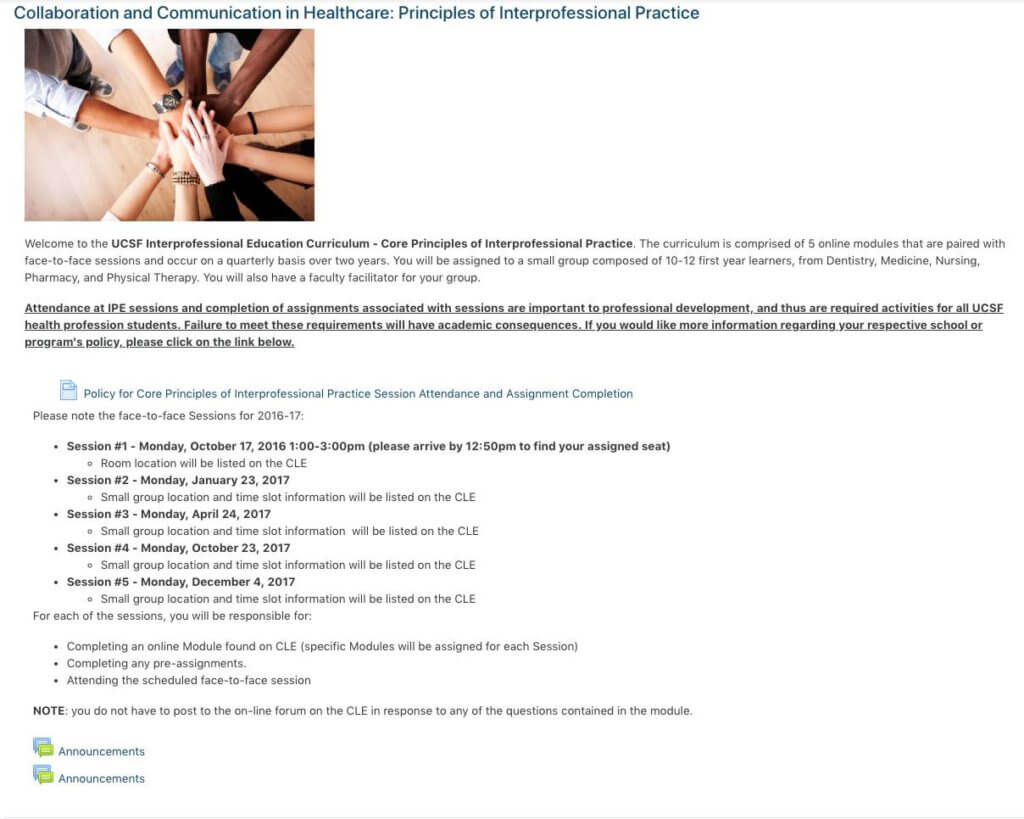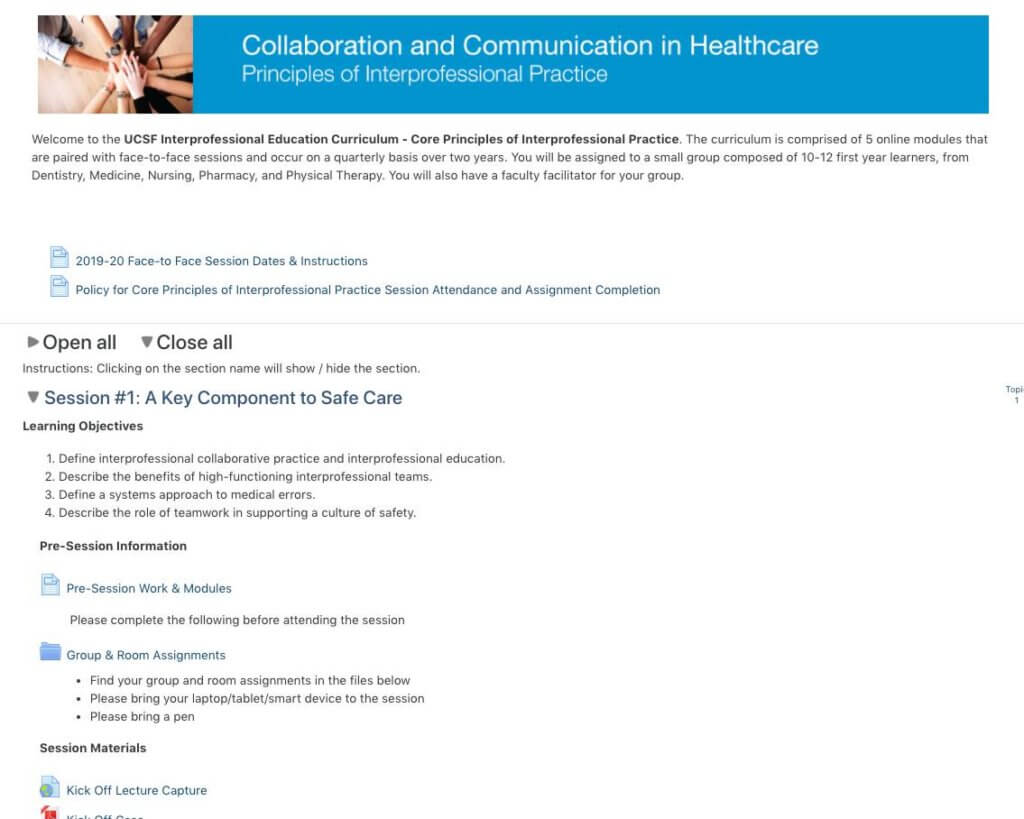Course redesign and revision can be an opportunity to review your course as a whole, to rethink just one or two elements, or to try something new. I have been reaching out to faculty and course coordinators to help them make improvements to their courses and offer my services for Instructional Design.
I recently met with Louise Hendrickson who is a Program Manager for the Principles of Interprofessional Practice Program to discuss how we can edit a course that she manages to improve the student user experience.
Background
The course that Louise manages is part of an interprofessional program which has an online component on the Collaborative Learning Environment (CLE). The class is taught by several faculty from different health professions and they each lead separate sections of the course. This alone creates many moving pieces for managing the course, but another layer of complexity is that it had also been previously managed by several different busy program coordinators who have since left the department. Louise inherited the course right before the start of the quarter, which is super busy, so she had to work with what others had started and made edits only when necessary. Once the spring quarter was over, she had time to focus on improving the course and take a closer look at the design and layout for the online portion of the course.
The Approach
During our initial consultation, Louise shared her challenges, goals for making improvements, timeline, and her expertise level with the CLE. We discussed my first impressions of the course and I suggested some easy changes that could make a big difference for students navigating the site. Together we created a list of items that we felt we could address, we scheduled several meetings to make edits and developed action items for each meeting. One of Louise’s challenges was that she has so many responsibilities that she hasn’t been able to focus on how to use the CLE so we decided to work on making changes together and treat our sessions as training so that she can implement changes independently in the future.
Improving the Student Experience
We started by editing the header section of the course, which typically includes a course description, instructions for getting started, contact information, and policies. Most of this information was already there but it was all listed on the course page which made it difficult for students to sort through. Since we had a lot of detailed information, we placed it into categories and used pages/links to provide access to further details. We also updated the course format to collapsed topics which allow students to hide or expand sections to give them the autonomy of revealing only the sections they are interested in exploring. This approach worked better than putting all the text on the page and drowning students in a sea of words. Organizing the content this way also made it easier for Louise to update.
Next, we took a look at the entire course and developed a consistent layout for each section, displaying content in the same order for each section. Every section included a title, learning objectives, pre-session information, session materials and assignments. Using repetition in course design gives students a road map of where to find things and helps them navigate the site confidently. Repetition also helps faculty stay organized because it helps them determine where to place materials within the course.
BEFORE
AFTER
Lessons Learned
I enjoyed working with Louise and learning about her perspective on course design challenges. The course that she manages had some design flaws but these issues are usually overlooked because departments are busy and there is not enough time to learn about the tools that the learning management system has to offer. We took the time to help Louise become more familiar with editing her courses and tools for organizing course content. The course is active and has been working well and Louise let me know that she is planning to use this course as a template for other courses in her program. The changes made to the IPE course were small but we believe they will have a big impact on improving the student experience.


